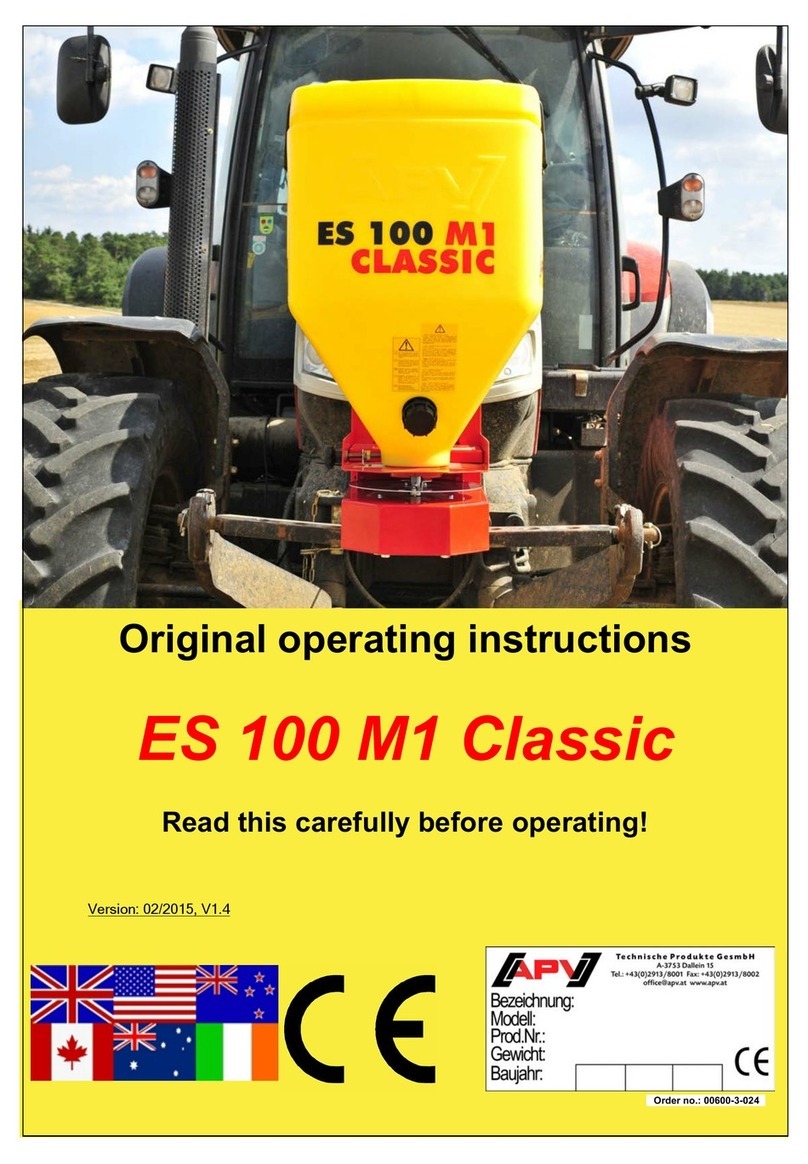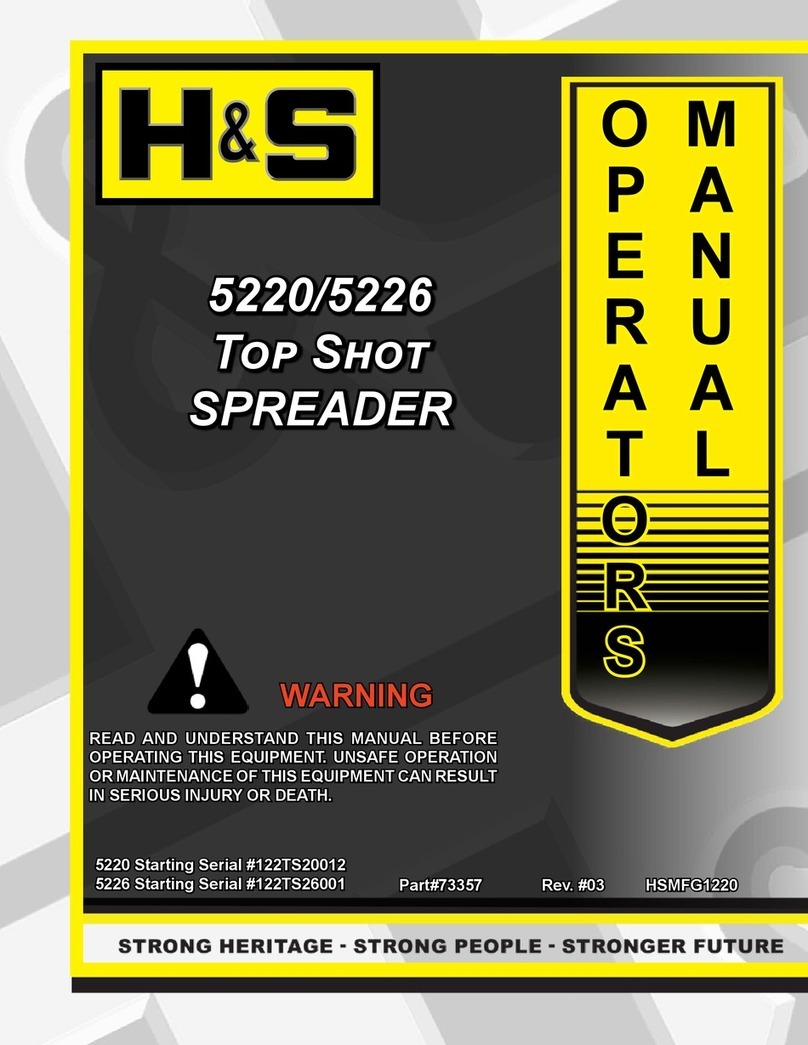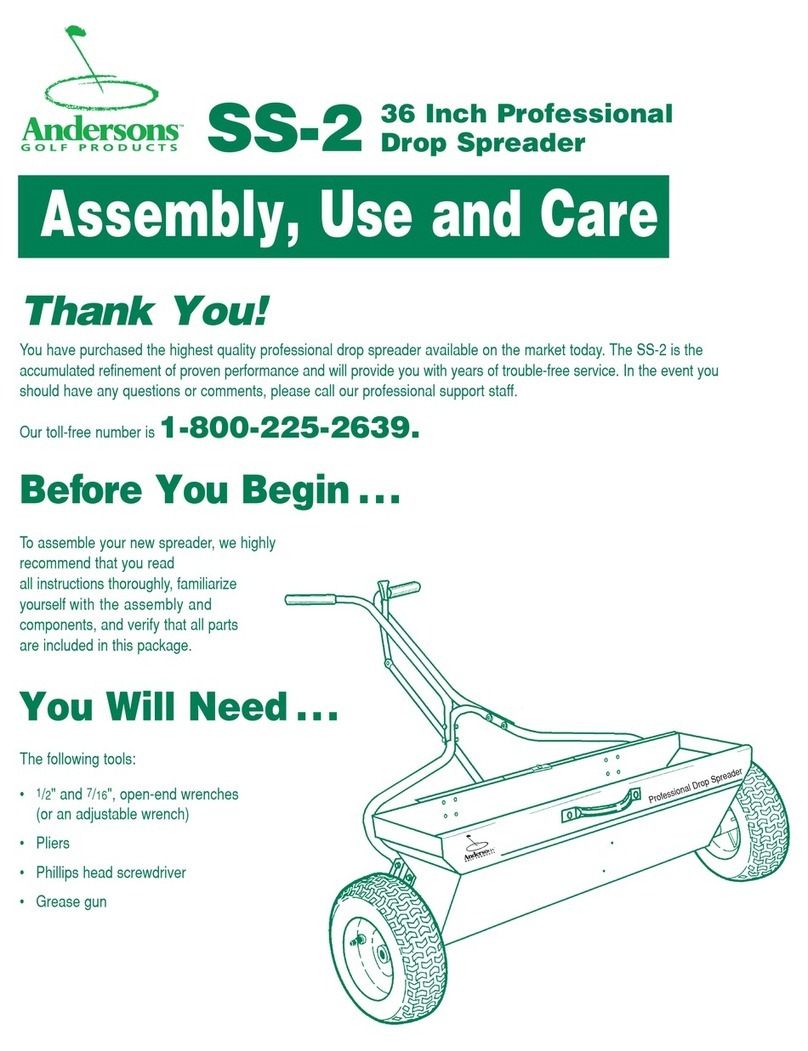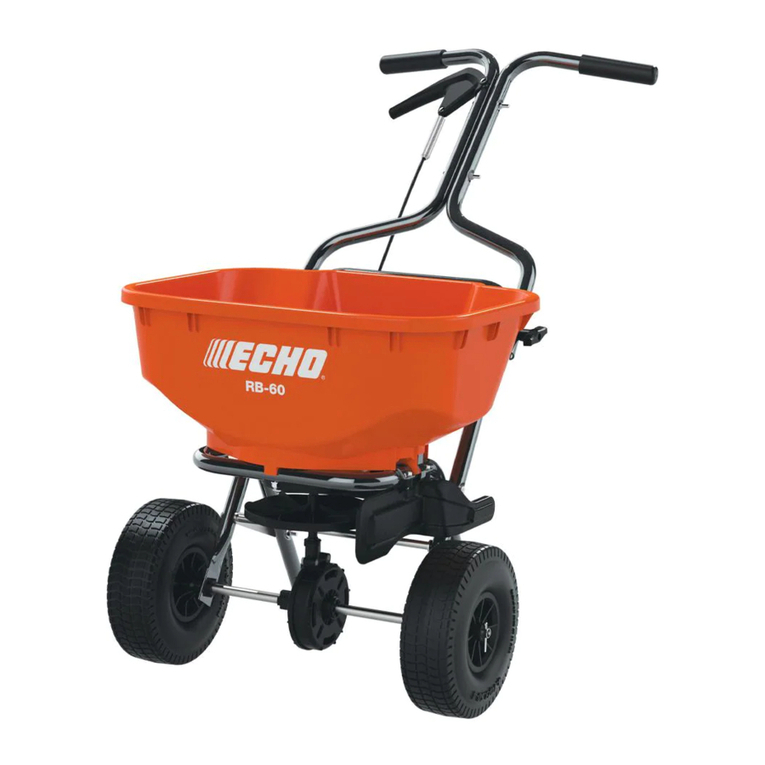
5
turning, going up, down, or across hills, when suddenly
changing speed, or operating on rough terrain. This shift
in load may cause possible instability, tipping, or rollover
of the machine. Reduce your speed in these situations.
• The sprayer hand wand may trap liquid under high
pressure, even when the engine is off. Accidental high
pressure spray discharge is hazardous and could cause
serious injury to you or bystanders.
•DO NOTpoint the hand wand towards or spray near
people.
• Always stay clear of the sprayer hand wand nozzle
and never point it at anything you do not intend to
spray.
• The hand wand is pressurized anytime the sprayer
pump is activated with the shutoff valve open.
• Take care to relieve the pressure in the hand wand
every time after shutting off the engine by squeezing
the trigger while pointing the wand in a safe direction.
•DO NOTpoint the hand wand at or spray electrical
components or wires.
•DO NOTattempt to disconnect the spray wand from
the unit while the system is pressurized.
Training
• Read, understand, and follow all instructions in the
manual and on the unit before starting. If the operator(s)
or mechanic(s) cannot read English it is the owner’s
responsibility to explain this material to them.
• Become familiar with the safe operation of the equipment,
operator controls, and safety signs.
• All operators and mechanics should be trained. The
owner is responsible for training the users.
• Only allow responsible adults, who are familiar with the
instructions, to operate the unit.
• Never let children or untrained people operate or service
the equipment. Local regulations may restrict the age of
the operator.
• The owner / user can prevent, and is responsible for,
accidents or injuries occurring to themselves, other
people, or property.
Preparation
• Evaluate the terrain to determine what accessories and
attachments are needed to properly and safely perform
the job. Use only accessories and attachments approved
by the manufacturer.
• Wear appropriate clothing including safety shoes, safety
glasses, and ear protection. Long hair, loose clothing, or
jewelry may get tangled in moving parts.
• Inspect the area where the equipment is to be used and
remove all objects such as rocks, toys, and wire, which
could possibly damage the unit's tires.
• Use extra care when handling gasoline and other fuels.
They are flammable and vapors are explosive.
• Use only an approved container for gasoline.
• Never remove fuel cap or add fuel with the engine
running. Allow engine to cool before refueling. Do not
smoke. Never refuel or drain the machine indoors.
• Check that safety switches and shields are attached and
functioning properly. Do not operate unless they function
properly.
• Become familiar with and follow all warnings,
recommendations, instructions and procedures for safe
use, handling, applying, storage and disposal of all
chemicals as listed on the manufacturer’s label of any
herbicides, pesticides or other chemicals.
• Wear all personal protective equipment as recommended
on the manufacturer’s label or MSDS of any herbicides,
pesticides or other chemicals. Personal protective
equipment may include safety glasses or goggles and/or
face shields, chemical resistant gloves, rubber boots and
a respirator or filter mask.
WARNING
It is a violation of California Public Resource Code, Section
4442, to use or operate the engine on any forest-covered,
brush-covered or grass-covered land unless the exhaust
system is equipped with a spark arrester, as defined
in Section 4442, maintained in effective working order.
Other states or federal jurisdictions may have similar laws.
Contact an Authorized Service Dealer to obtain a spark
arrester designed for the exhaust system installed on this
engine.
• OSHA regulations may require the use of hearing
protection when exposed to sound levels greater than 85
dBA for an 8 hour time period.
WARNING
This machine produces sound levels in excess of 85 dBA
at the operator’s ear and can cause hearing loss though
extended periods of exposure. Wear hearing protection
when operating this machine.
Children
Tragic accidents can occur if the operator is not alert to the
presence of children. Children are often attracted to the unit
and operating activity. Never assume that children will remain
where you last saw them.
• Keep children out of the operating area and under the
watchful care of another responsible adult.
• Be alert and turn the unit off if children enter the area.
• Before and while driving in reverse, look behind and
down for small children.
• Never carry children, even with the spreader spinner off.
They may fall off and be seriously injured or interfere
with the safe operation of the unit. Children who have
been given rides in the past may suddenly appear in the
operation area for another ride and could be run over or
backed over by the machine.
• Never allow children to operate the unit.





























